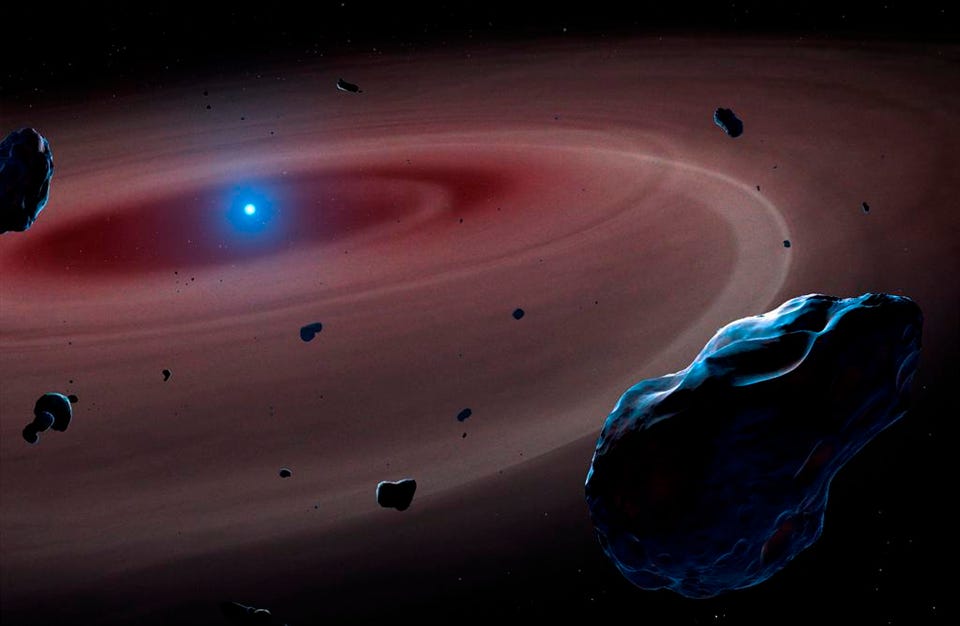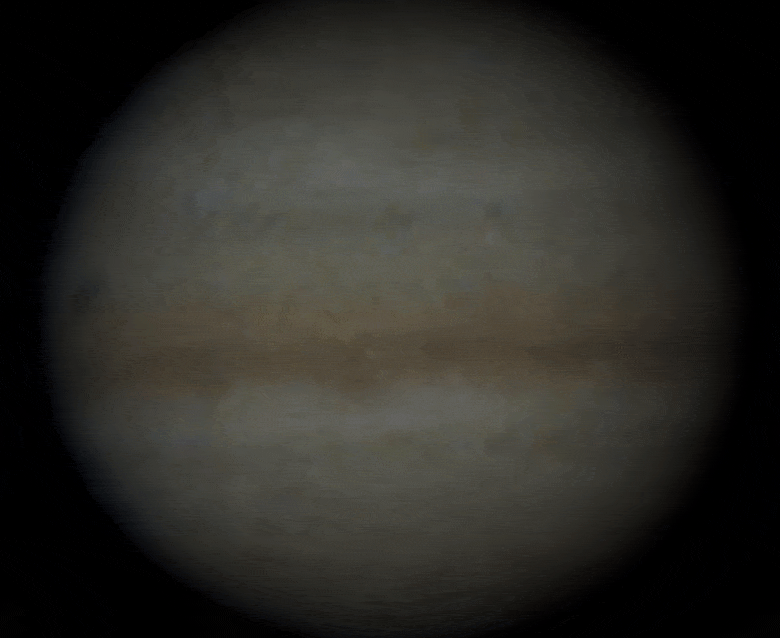William Shatner cried upon returning from space. The “overview effect” explains why

- William Shatner, who played Captain Kirk in “Star Trek,” flew to space on October 13, 2021, as part of Blue Origin’s second flight.
- Upon returning to Earth, he gave an emotional speech about the profound experience: an example of the overview effect that astronauts often feel.
- This change in perspective concerning our terrestrial squabbles is, perhaps, something that all humans need, and deserve, to experience for themselves.
In all of human history, only a few thousand people have ever reached the final frontier: breaking the gravitational bonds of Earth and experiencing the wonders of being present in space. On October 13, 2021, William Shatner — best known as Star Trek’s Captain Kirk — became the oldest person, at age 90, to ever experience it. Almost immediately, he recounted a feeling that other astronauts have reported: a cognitive shift in awareness that’s known as the overview effect.
Reported by a large number of astronauts and cosmonauts, from the first person in space (Yuri Gagarin) right up through the most recent (Shatner), the sense of compassion and fragility for all of humanity, and perhaps even all life on Earth, is something that you have to experience for yourself to truly understand. While most of us will only get a sense of that feeling of going to space secondhand, through pictures and videos, it cannot reproduce the lived experience of those who’ve been there. At this crucial moment in human civilization, we should all be listening to the message brought back from those who’ve ventured beyond our planet’s boundaries.

Credit: NASA
What is the overview effect?
Coined by Frank White in 1987, the overview effect describes what the spaceflight experience, for lack of a better term, awakens in those who venture into space and view Earth. As White writes:
“There are no borders or boundaries on our planet except those that we create in our minds or through human behaviors. All the ideas and concepts that divide us when we are on the surface begin to fade from orbit and the moon. The result is a shift in worldview, and in identity.”
There are some fundamental truths about our reality that we all intellectually know, but rarely experience. We tend to view Earth as divided into various distinct pieces. We do this so naturally that we rarely stop to think about it, but we frequently talk about:
- oceans and land masses
- the seven continents
- the different countries, states, cities, and neighborhoods
- people who are “like us” and “different from us”
We do all this despite the fact that we know that there is much, much more that unites us than divides. Earth is one interconnected system. What we do, both as individuals and as a human civilization, is deeply tied to all that transpires on our planet.
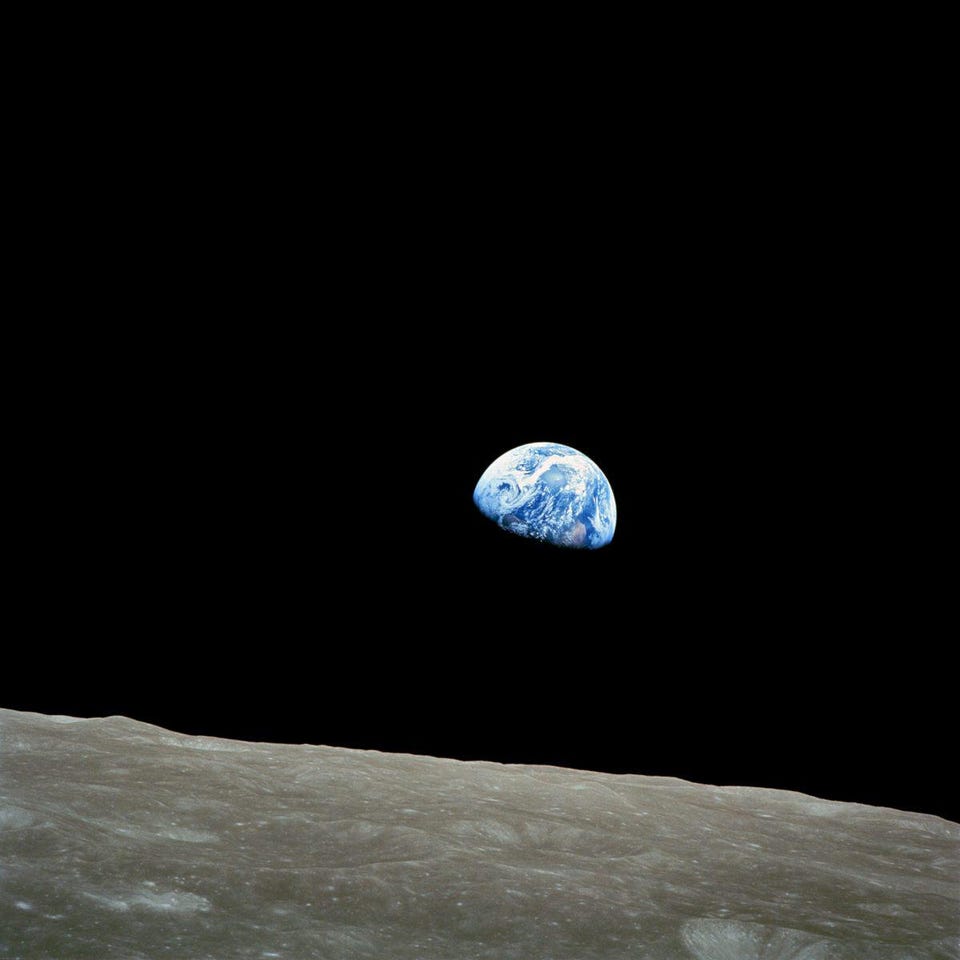
Credit: NASA/Apollo 8
Perhaps no photograph better encapsulates that feeling than the one above: the famous “Earthrise” photo from the Apollo 8 mission, the first crewed mission to reach and travel behind the moon. For about 45 minutes, the astronauts were cut off from all communications on Earth, as no radio signals could be either transmitted or received. And then, as the spacecraft reemerged from behind the moon, there it was, coming up over the limb of the moon: our own planet, Earth, tiny, distant, fragile, and blue, just hanging there in the abyss of space. For the first time, human eyes glimpsed our world from the perspective of another. The feeling the astronauts experienced was beyond breathtaking.
Three astronauts were aboard that flight: Frank Borman, Jim Lovell, and Bill Anders. As Anders most famously put it, “We came all this way to explore the moon, and the most important thing is that we discovered the Earth.” But it was Borman, the mission commander, who perhaps best described the overview effect, describing an internal feeling that most of us have never experienced for ourselves,
“When you’re finally up at the moon looking back on earth, all those differences and nationalistic traits are pretty well going to blend, and you’re going to get a concept that maybe this really is one world and why the hell can’t we learn to live together like decent people.”
There are an enormous number of changes that occur in your perspective when you make that journey to space yourself. Upon launch, you feel yourself accelerated upwards with a force that significantly exceeds Earth’s gravity, similar to a roller coaster or a car accelerating from rest with the gas pedal pressed to the floor. Only, instead of lasting for just a few seconds, the acceleration continues, unabated, for minutes at a time. As you rise, higher and higher, the color of the sky begins to fade away, from cyan to blue to a deep, dark black: darker than any black you’ll experience peering up at Earth’s night sky. From above the Earth’s atmosphere, every star is a steady point of light; the stars will have ceased to twinkle.
And then, as described by so many, you see it. You look back at where you came from — back at planet Earth — and you get this grand perspective of our home planet. You witness the thin atmosphere, with a smattering of ever-changing clouds, above the blue oceans and the darker land masses. You recognize how interdependent everything that occurs on our world is on the environment, and how rare and precious that environment is. Most of all, you simultaneously feel both the insignificance and the great significance of existence. Our planet’s locations and properties, as well as the richness of life transpiring down below, may truly be unique in all the universe. There’s a sense of urgency that’s often described as well: if we don’t start taking proper care of the Earth, we will run the risk of pushing all that we hold dear and precious to a premature extinction.
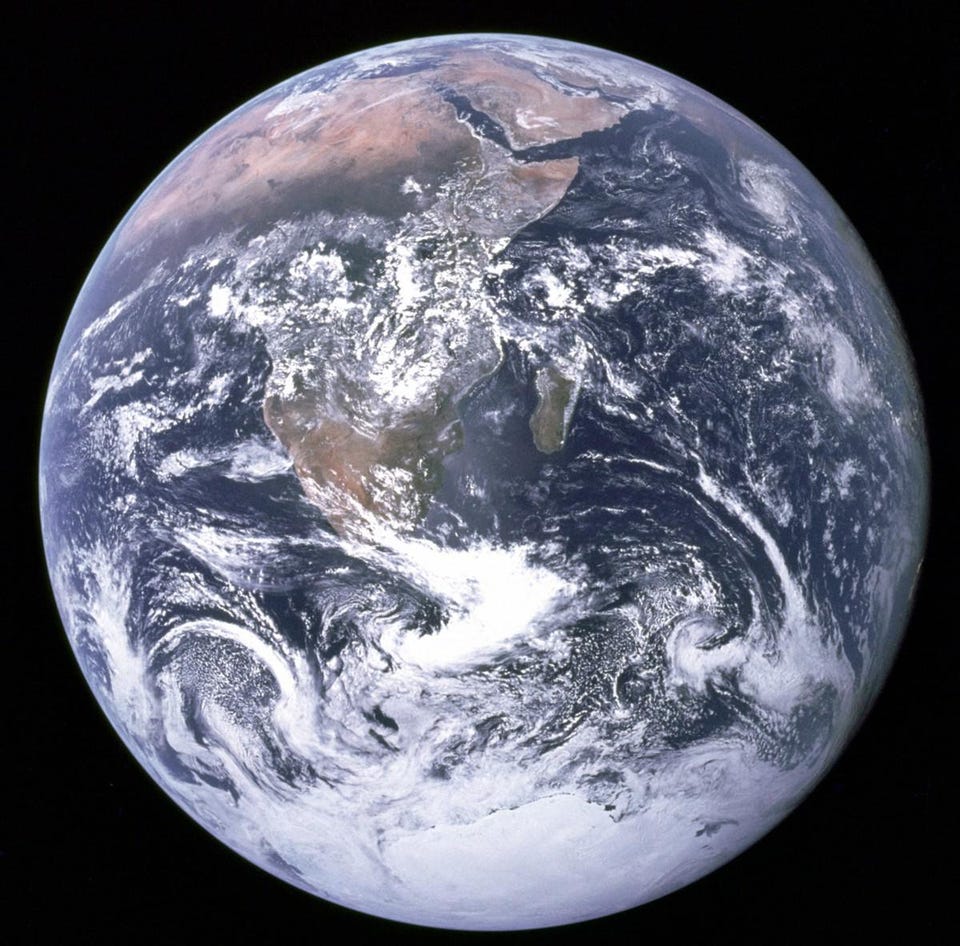
Credit: NASA / Apollo 17
What have other astronauts experienced?
In 1961 — a full 60 years ago — Yuri Gagarin became the first human in space. Upon his return, many expected him to emerge with a message of pro-Soviet Union propaganda, but instead he began remarking on the beauty of Earth and the feelings in his heart. “Orbiting Earth in the spaceship, I saw how beautiful our planet is. People, let us preserve and increase this beauty, not destroy it!”
In the decades since, across nationalities and time, those same sentiments have been echoed by so many who’ve left the bonds of Earth to briefly venture into the grand abyss of space.
Roger Chaffee, the Apollo 1 astronaut who tragically perished in a launchpad fire, dreamed of a future where everyone could share in the perspective gained by those who were fortunate enough to experience it for themselves. “The world itself looks cleaner and so much more beautiful. Maybe we can make it that way — the way God intended it to be — by giving everyone, eventually, that new perspective from out in space.”
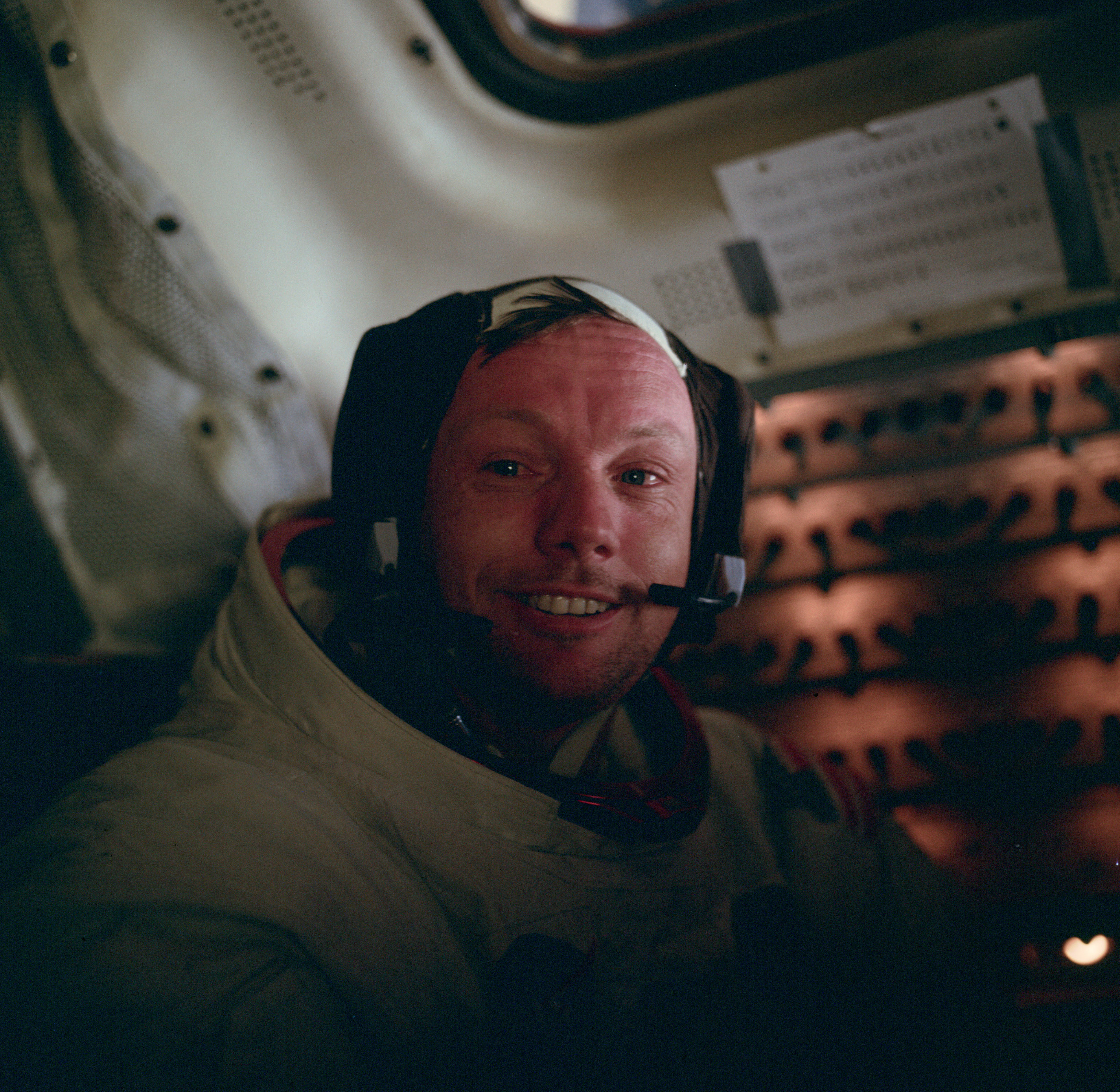
Almost every photo from the Apollo 11 mission was taken by Neil Armstrong, meaning that almost every photo of an astronaut on the moon from that mission is Buzz Aldrin, not Neil Armstrong. But this photo, above, shows Neil as he appeared after completing his first historic steps on the moon, with tears in his eyes. He remembered his time walking on the moon’s surface: “It suddenly struck me that that tiny pea, pretty and blue, was the Earth. I put up my thumb and shut one eye, and my thumb blotted out the planet Earth. I didn’t feel like a giant. I felt very, very small.”
Astronauts also commonly describe a different visceral feeling that you might not expect: one of frustration and being called to action. As Edgar Mitchell, Apollo 14 astronaut, recounted, “You develop an instant global consciousness, a people orientation, an intense dissatisfaction with the state of the world, and a compulsion to do something about it. From out there on the moon, international politics look so petty. You want to grab a politician by the scruff of the neck and drag him a quarter of a million miles out and say, ‘Look at that, you son of a bitch.’”
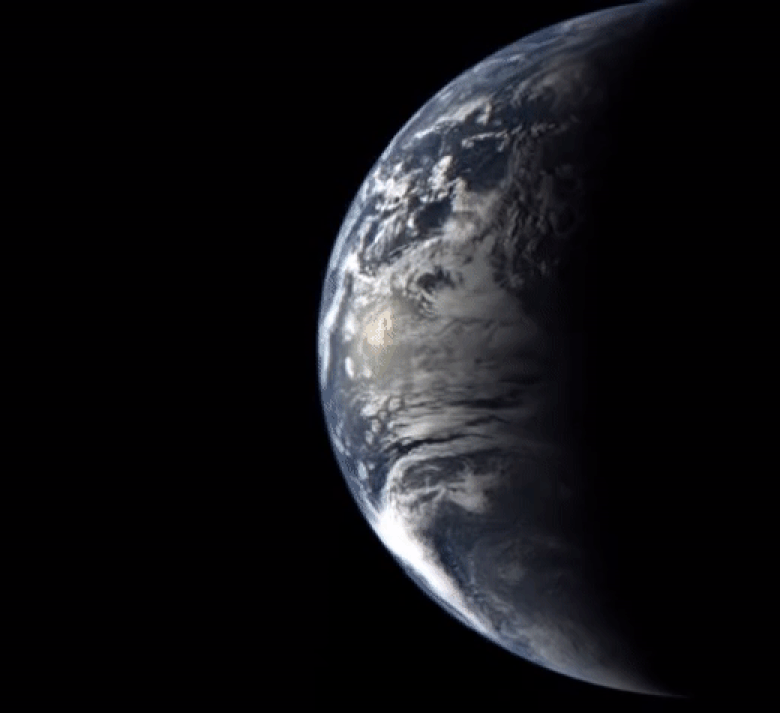
Credit: NASA/MESSENGER
This set of feelings has been echoed by many, from moonwalkers to ISS and space shuttle astronauts to civilian space tourists. Some other astronaut perspectives include:
- Michael Lopez-Algeria: “A…faceplate is all that separates our eyes from the void…I cannot imagine any other experience that could approach this one. Curiously, I found that when outside I was much more moved by nature and less drawn to particular places. The perspective is so much greater that zooming in on a city seems uninteresting.”
- Nicole Stott: “It surprises you every time you look out, even if you are looking at the same place that you flew over before. This kind of very dynamic, ever-changing appearance of the place that gives it the appearance that it’s alive.”
- Joseph Allen: “I’ve known every cosmonaut and every astronaut…without exception, every one of them cannot get over the beauty of seeing planet Earth. It just takes your breath away and… you just cannot take your eyes off the Earth. It just is so beautiful.”
- Anousheh Ansari: “The actual experience exceeds all expectations and is something that’s hard to put to words … It sort of reduces things to a size that you think everything is manageable … All these things that may seem big and impossible … We can do this. Peace on Earth? No problem. It gives people that type of energy … that type of power, and I have experienced that.”
- Ed White: “I’m coming back in… and it’s the saddest moment of my life.”
And yet, it’s perhaps up to William Shatner, the oldest person ever to travel to space at age 90, to put it in terms that most of us can viscerally relate to.
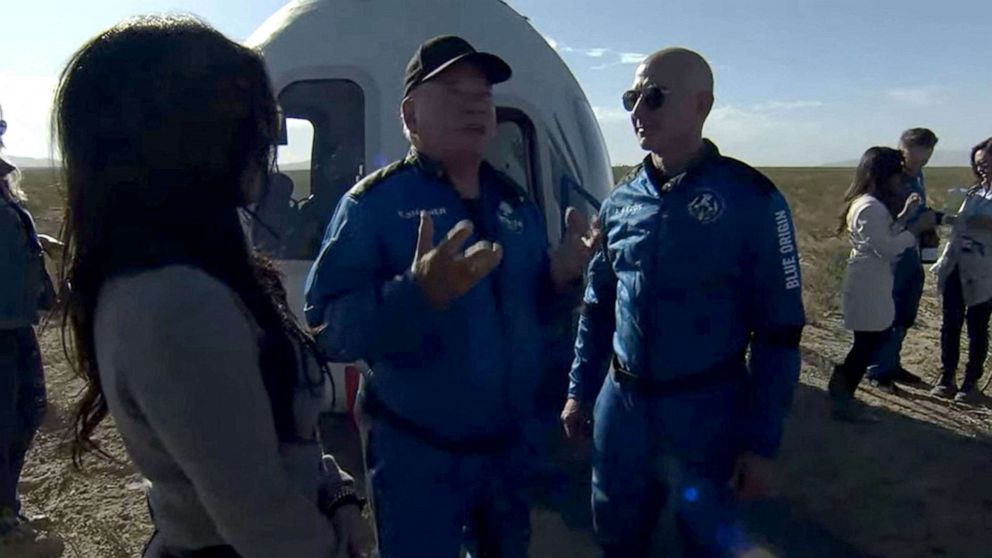
What can William Shatner’s experience teach us?
Being moved to tears is a common experience described by astronauts, going all the way back to Alan Shepard: the first American astronaut in space. Shatner, upon his return to Earth, recounted the following message of gratitude, hope, and the profoundly deep emotions he was feeling:
“Everybody in the world needs to do this. Everybody in the world needs to see this. [It’s] unbelievable… To see the blue color rip by you and now you’re staring into blackness, that’s the thing… the covering of blue. This sheet, this blanket, this comforter of blue we have around us, we say ‘oh, that’s blue sky,’ and then suddenly you shoot through it all of a sudden, like you rip the sheet off of you when you’re asleep, and you’re looking into blackness, into black ugliness, and you look down and there’s the blue down there and the black up there … there is mother and Earth and comfort and there’s, is there death? I don’t know? Was that death? Is that the way death is? Whup! And it’s gone. It was so moving to me. This experience, it’s something unbelievable.”
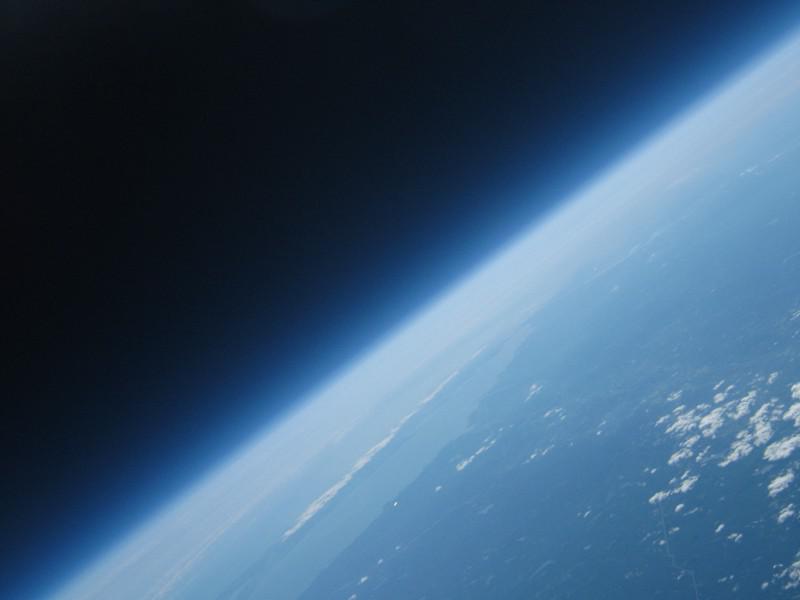
The feelings he describes — of the fleetingness of being alive on Earth, of the preciousness of the time we have and the location we’re lucky enough to inhabit — go far beyond our terrestrial concerns. After describing the enormity and the suddenness, and the change in the color of the blackness of space compared with the blue that is our home, Shatner continued:
“I can’t even begin to express. What I would love to do is to communicate as much as possible the jeopardy, the moment you see the vulnerability of everything, it’s so small. This air, which is keeping us alive, is thinner than your skin. It’s a sliver. It’s immeasurably small when you think in terms of the universe. It’s negligible, this air. Mars doesn’t have any. And when you think about… the oxygen, the 20% [of the atmosphere] that sustains our life, it’s so thin! To dirty it… I mean, that’s another whole… <waves hands>.”
“If everybody… it would be so important for everybody to have that experience through one means or another… we all hugged each other, you know you share, it’s like being in battle together, and there is this bonding of being in battle. But you’re also in battle inside yourself. Oh my goodness, I have had an experience.”
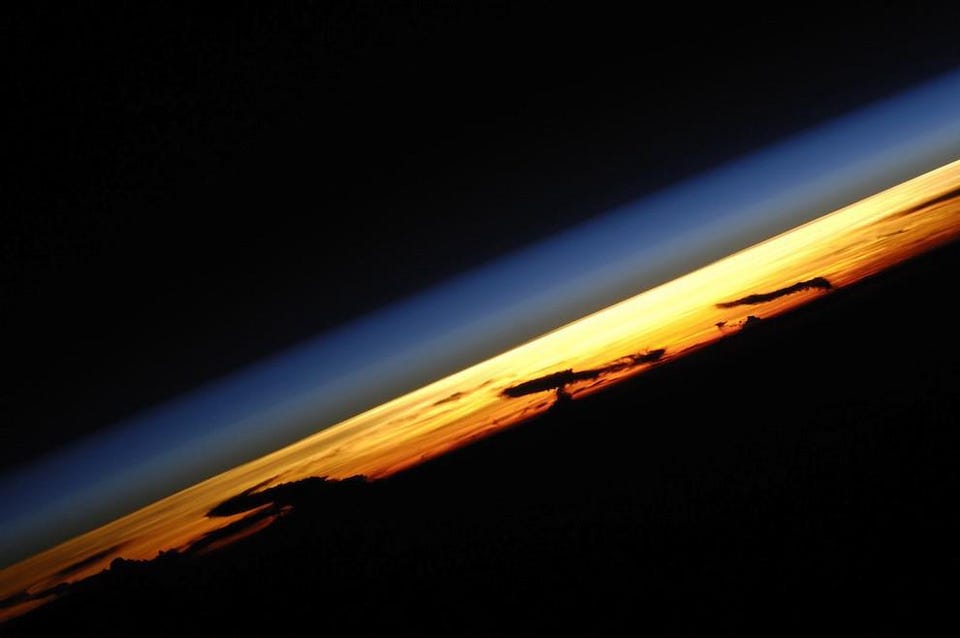
Credit: Fyodor Yurchikhin/Russian Space Agency
On Earth, we often feel pressure to overfocus on the mundane concerns of everyday life. If we’re not careful, they can fill up all of our time, energy, and mental space, leaving us very little room to contemplate what’s truly, vitally important to ourselves in this world. Even something as fleeting as a 10-minute flight — taking the crew some 100 kilometers (62 miles) up — can be a life-changing experience, putting the minutiae of our experience into a context that flips our daily concerns on their heads.
As you can see from watching Shatner’s video yourself, he’s trying to communicate an experience that words cannot encapsulate. There’s a sensation, an emotion, a perspective, that perhaps is only accessible to people who’ve seen it and lived it for themselves: the preciousness, the rarity, the fragility of all that we have here, around us, and that life as we know it has only one home: Earth. Everywhere else seems to be a vast abyss of lifeless emptiness, except for right here. And perhaps, if we can bring ourselves to treat our home with the care that it requires, we’ll find a kind of fulfillment, contentment, and broad, long-term perspective that will bring about the civilization we’ve struggled to create for so long.
The takeaways from all of this are unambiguous. But we have to choose to listen to what the explorers who’ve gone before us have reported. When they talk about developing an instant global consciousness, they’re talking about having a set of epiphanies all at once. They experience the recognition that everything we view as borders or boundaries are artificial; there are no inherent geographical lines separating humans. They witness firsthand how unfamiliar the environment of space is, and how everything they’ve known, loved, or experienced exists “down there” on that tiny, isolated, and fragile blue ball.
The act of going to space is always a remarkable demonstration of our profound technological achievements as a species. However, the internal shift that happens in the perspective of everyone who gets to experience is perhaps the most profound thing of all: a change in your state of mind that compels you to recognize the oft-forgotten truth of our fragile existence. In all the universe, there is no other known world with both the diversity and the fragility of our planet. Just maybe, if more of us got to experience it for ourselves, we’d be compelled to take better care not only of one another, but of our cosmic home as well.

